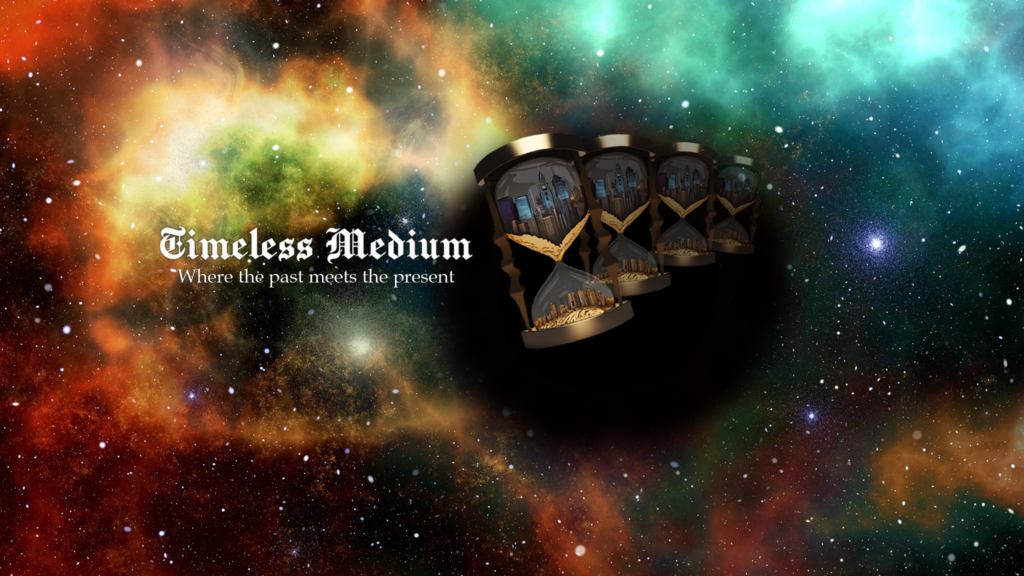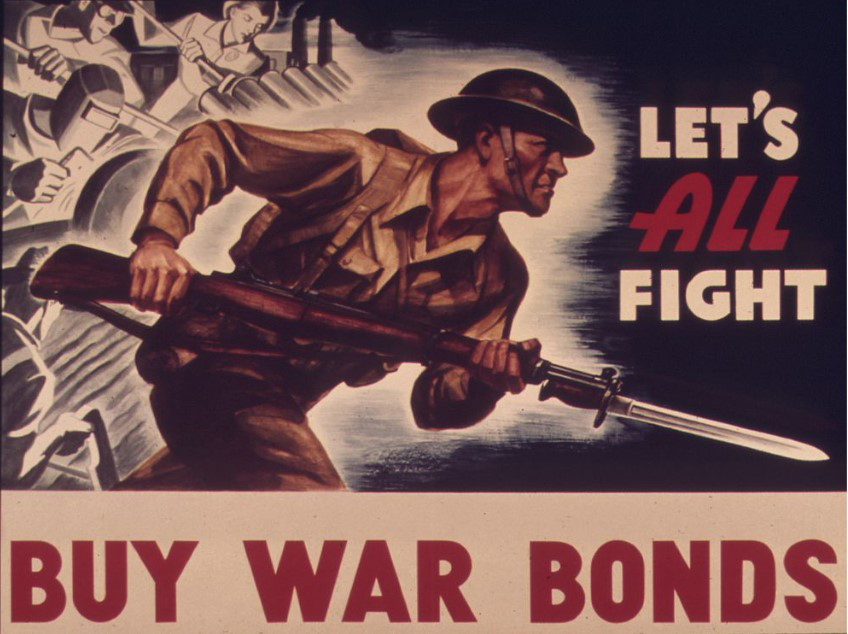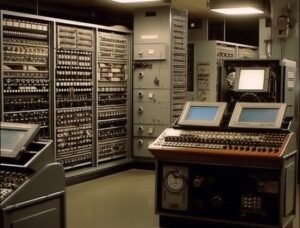Financing the War Effort Through Bond and Stamp Sales
The last time the United States issued war bonds was during World War II, when full employment collided with rationing, and war bonds were seen as a way to remove money from circulation as well as reduce inflation.
Issued by the U.S. Government, they were first called Defense Bonds. The name was changed to War Bonds after the Japanese attack on Pearl Harbor, December 7, 1941. Known as debt securities for the purpose of financing military operations during war time, the bonds yielded a mere 2.9 percent return after a 10-year maturity.
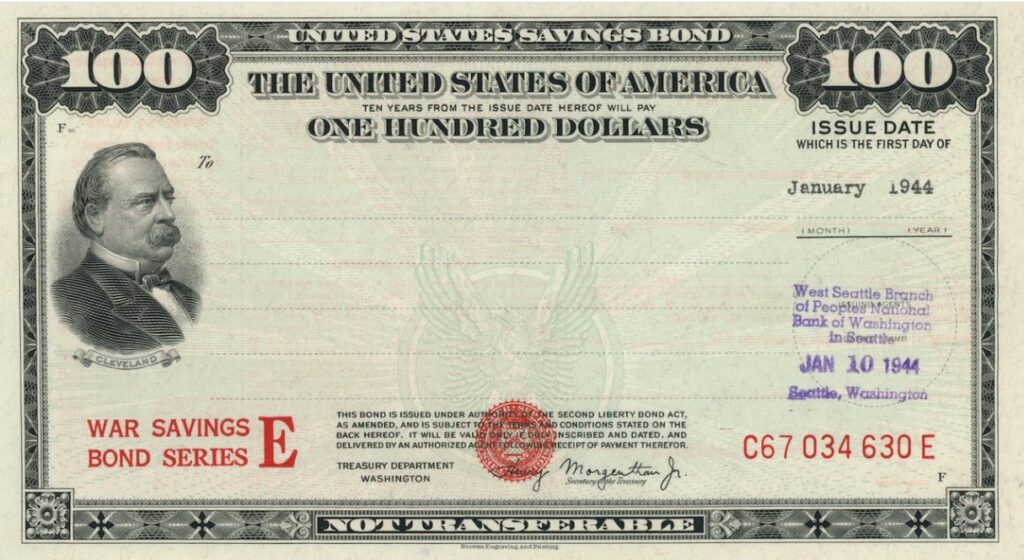
Living in the United States with a median income during World War II meant earning about $2,000 a year. Despite the war’s hardships, 134 million Americans were asked to purchase war bonds to help fund the war. Stamps also could be purchased, starting at 10 cents each, to save toward the bond. U.S. War Bonds poster. The first Series ‘E’ U.S. Savings Bond was sold to President Franklin D. Roosevelt by Treasury Secretary Henry Morgenthau. The bonds sold at 75 percent of their face value in denominations of $25 up to $10,000, with some limitations. The war bonds were actually a loan to the government to help finance the war effort.
The War Finance Committee was in charge of supervising the sale of all bonds, and the War Advertising Council promoted voluntary compliance with bond buying. The work of those two organizations produced the greatest volume of advertising in U.S. history.
In the name of defense of American liberty and democracy, and as safe havens for investment, the public was continually urged to buy bonds. An emotional appeal went out to citizens by means of advertising. Even though the bonds offered a rate of return below the market value, it represented a moral and financial stake in the war effort. The advertisements started with radio and newspapers, then later added magazines to reach the masses. The bond campaign was unique in that both the government, as well as private companies, created the advertisements.
Those who contributed advertising space felt they were doing even more for the war effort; then there were organizations that made up their own war bond advertisements to reflect their patriotism. The government recruited New York’s best advertising agencies, famous entertainers, and even used familiar comic strip characters to further their appeal to America. In their advertisements, the New York Stock Exchange urged purchasers not to cash in their bonds. More than a quarter of a billion dollars worth of advertising was donated during the first three years of the National Defense Savings Program. Massive advertising campaigns used any means of media possible, and the campaign was a huge success.
Word spread quickly; polls indicated after only one month that 90 percent of those responding were aware of war bonds. Bonds became the ideal channel for those on the home front to contribute to the national defense.
Bond rallies were held throughout the country with famous celebrities, usually Hollywood film stars, to enhance the advertising’s effectiveness. Free movie days were held in theaters nationwide with a bond purchase as the admission. Such popular Hollywood stars as Greer Garson, Bette Davis and Rita Hayworth completed seven tours in more than 300 cities and towns to promote war bonds. The “Stars Over America” bond blitz, in which 337 stars took part, surpassed its quota and netted $838,540,000 worth of bonds. One promotional cardboard had slots for 75 quarters, to equal $18.75. When it was full, one could turn it into the post office for a $25 war bond that matured in 10 years.
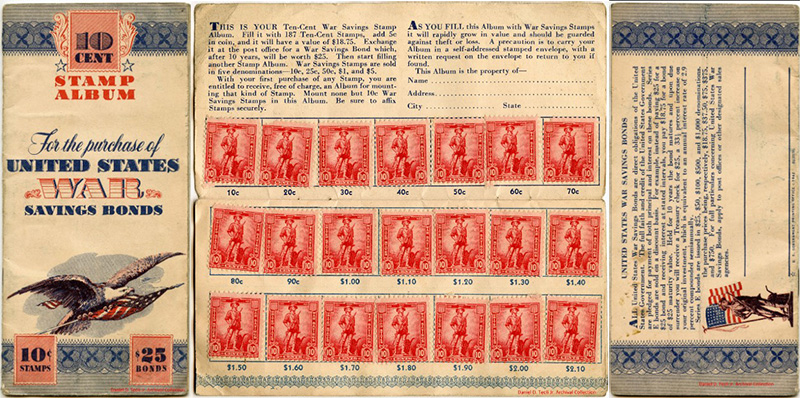
Local clubs, organizations, movie theaters and hotels also did their part with their own advertisements. Then there was the Civilian D-Day on June 6th, 1944, when thousands of ads flew from the sky over Chicago to capture the attention and hearts of potential contributors. Even the Girl Scouts became involved with each scout donating one stamp. Those stamps, starting at 10 cents each, were then traded into the national organization for the purchase of war bonds.
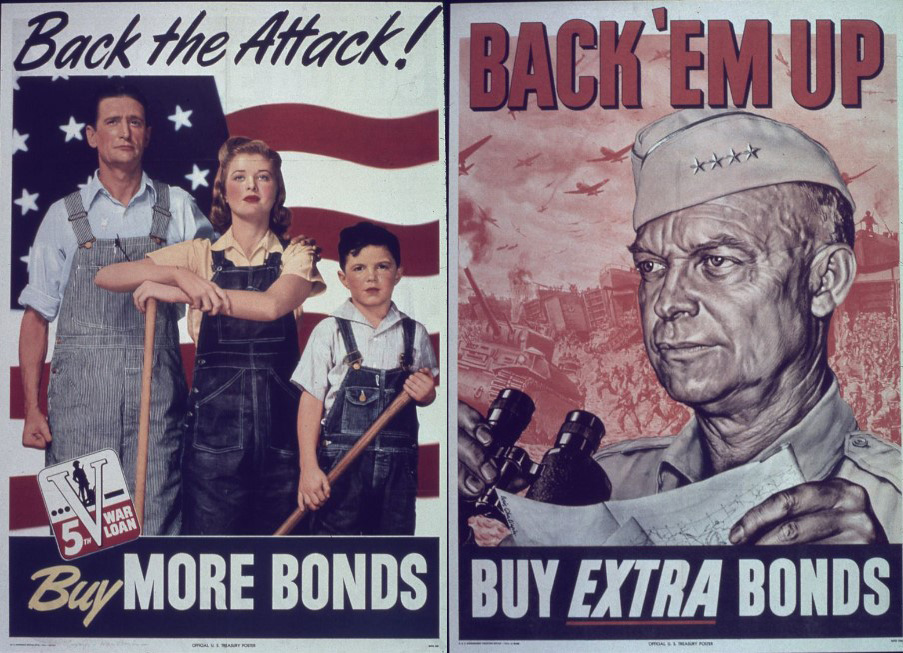
Norman Rockwell created a series of illustrations in 1941 that became a centerpiece of war bond advertising. The Saturday Evening Post reproduced and circulated them, much to the public’s approval. While Rockwell was the most notable artist of war bonds, Irving Berlin was the most celebrated composer. Famous for his “God Bless America,” he wrote a song entitled “Any Bonds Today?” and it became the theme song of the Treasury Department’s National Defense Savings Program. The famous Andrew Sisters were among the primary performers of this historic song.
One of the most successful single events was a 16-hour marathon radio broadcast on CBS, during which nearly $40 million worth of bonds were sold. The marathon featured singer Kate Smith, famous for her rendition of “God Bless America.” Patriotism and the spirit of sacrifice could be expressed with war bond purchases. Millions jumped aboard the war bond effort. The sports world did its part as well, holding special football and baseball games with a war bond as the price of admission.
An unusual baseball game took place in New York City with the New York Yankees, the New York Giants and the Brooklyn Dodgers. Each of the teams came to bat six times in the same nine-inning game. Their final score was the Dodgers 5, Yankees 1 and the Giants 0, and the U.S. Government was $56,500,000 richer in war bond sales.
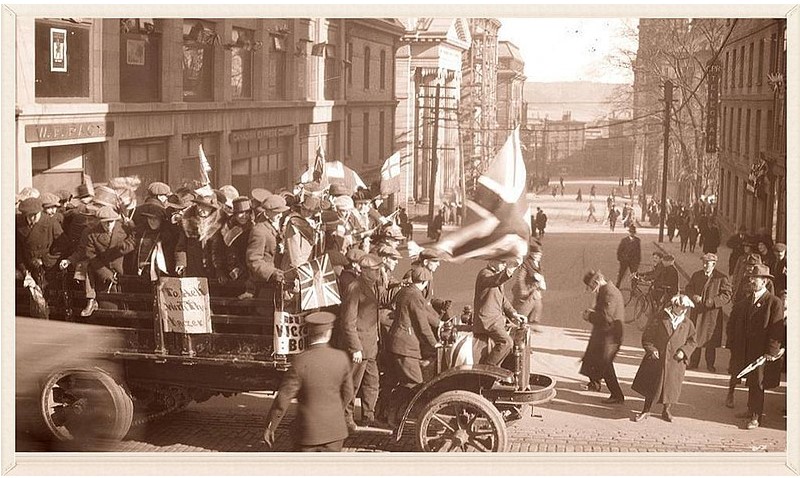
At the end of World War II, January 3, 1946, the last proceeds from the Victory War Bond campaign were deposited into the U.S. Treasury. More than 85 million Americans — half the population — purchased bonds totaling $185.7 billion. Those incredible results, due to the mass selling efforts of helping to finance the war, have never since been matched. The Series E bond was withdrawn on June 30, 1980, when the Series EE bond replaced it, and the War Bond became history.
Images acquired from Wikipedia and Archive.org
